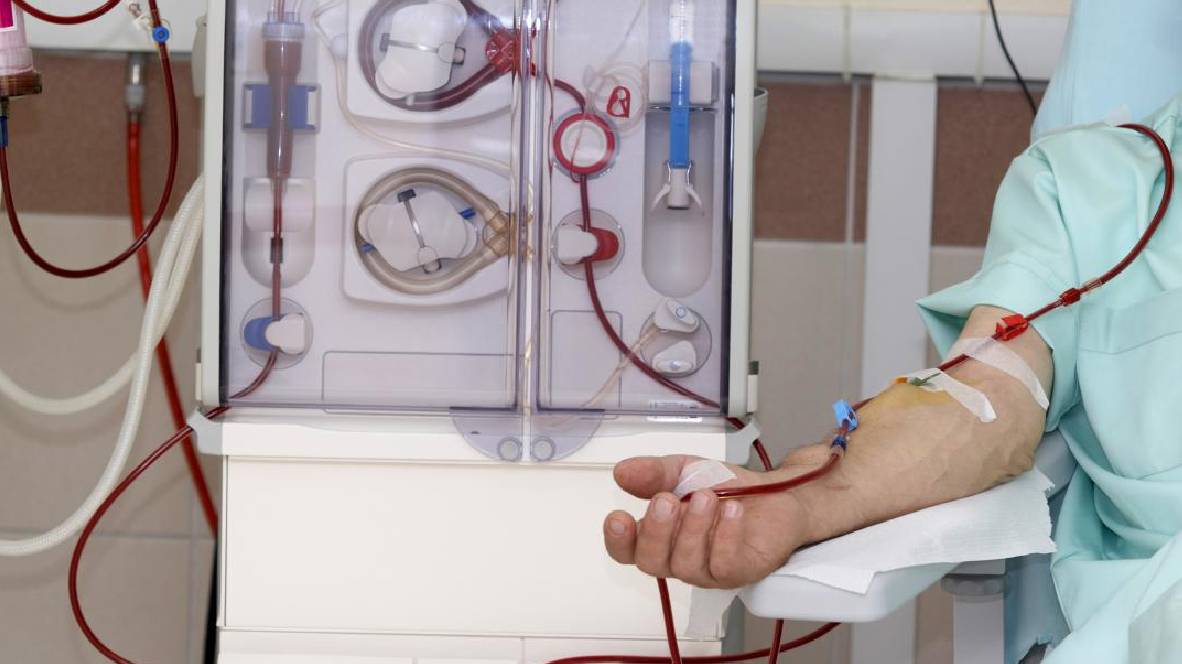
Dialysis
Dialysis is a medical treatment for patients with kidney failure. It performs the functions of the kidneys by removing waste products and excess fluids from the blood. There are two main types of dialysis: hemodialysis and peritoneal dialysis. Hemodialysis involves filtering the blood through a machine, while peritoneal dialysis uses the lining of the abdomen as a natural filter. Dialysis centers are equipped with specialized machines and staffed by trained healthcare professionals to provide this life-sustaining treatment.
Overview
Dialysis is a medical procedure used to perform the functions of the kidneys when they are unable to adequately filter waste products and excess fluids from the blood. It is primarily indicated for individuals with kidney failure or end-stage renal disease (ESRD), where the kidneys have lost their ability to maintain proper fluid and electrolyte balance in the body.
Types of Dialysis
Hemodialysis:
- Procedure: Blood is circulated through a dialysis machine (dialyzer) where it is filtered to remove waste products and excess fluid.
- Access: Typically done through an arteriovenous fistula (AV fistula), arteriovenous graft (AV graft), or central venous catheter.
- Frequency: Usually performed multiple times a week, typically in a dialysis center or hospital setting.
- Duration: Each session lasts several hours, during which blood is continuously filtered.
Peritoneal Dialysis:
- Procedure: Uses the lining of the abdomen (peritoneum) as a natural filter. Dialysis solution (dialysate) is introduced into the abdomen, where it absorbs waste products and excess fluid through osmosis.
- Types: Continuous Ambulatory Peritoneal Dialysis (CAPD) and Automated Peritoneal Dialysis (APD), which uses a machine to exchange fluid automatically.
- Access: Requires the placement of a peritoneal dialysis catheter.
- Frequency: Can be done daily or nightly, providing more flexibility compared to hemodialysis.
Indications for Dialysis
- Acute Kidney Injury (AKI): Sudden loss of kidney function requiring temporary dialysis until kidney function improves.
- Chronic Kidney Disease (CKD): Progressive loss of kidney function over time, eventually leading to ESRD.
- End-Stage Renal Disease (ESRD): Total and permanent loss of kidney function requiring long-term dialysis or kidney transplantation.
Symptoms of Kidney Failure
- Fatigue and weakness
- Swelling (edema) in legs, ankles, or feet
- Shortness of breath
- Confusion and decreased mental sharpness
- Nausea and vomiting
- Itching and skin rash (uremic pruritus)
Prevention of Kidney Disease Progression
- Management of Underlying Conditions: Control of diabetes, hypertension, and other contributing factors.
- Healthy Lifestyle: Balanced diet, regular exercise, and avoiding tobacco.
- Medication Adherence: Taking prescribed medications as directed to protect kidney function.
Complications and Management
- Hypotension: Low blood pressure during dialysis sessions.
- Infection: Risk of peritonitis in peritoneal dialysis or bloodstream infections with central venous catheters.
- Electrolyte Imbalances: Monitoring and managing potassium, calcium, and phosphate levels.
- Vascular Access Issues: Maintaining patency and function of AV fistulas, grafts, or catheters.
- Long-Term Considerations: Assessment for kidney transplantation as a potential long-term solution.
Lifestyle Considerations
- Dietary Restrictions: Limiting sodium, potassium, phosphorus, and fluid intake based on individual needs.
- Fluid Management: Monitoring and restricting fluid intake to maintain fluid balance.
Patient Education and Support
- Adherence to Treatment: Understanding the importance of regular dialysis sessions and following dietary and fluid restrictions.
- Monitoring and Reporting: Recognizing symptoms of complications and reporting to healthcare providers promptly.
